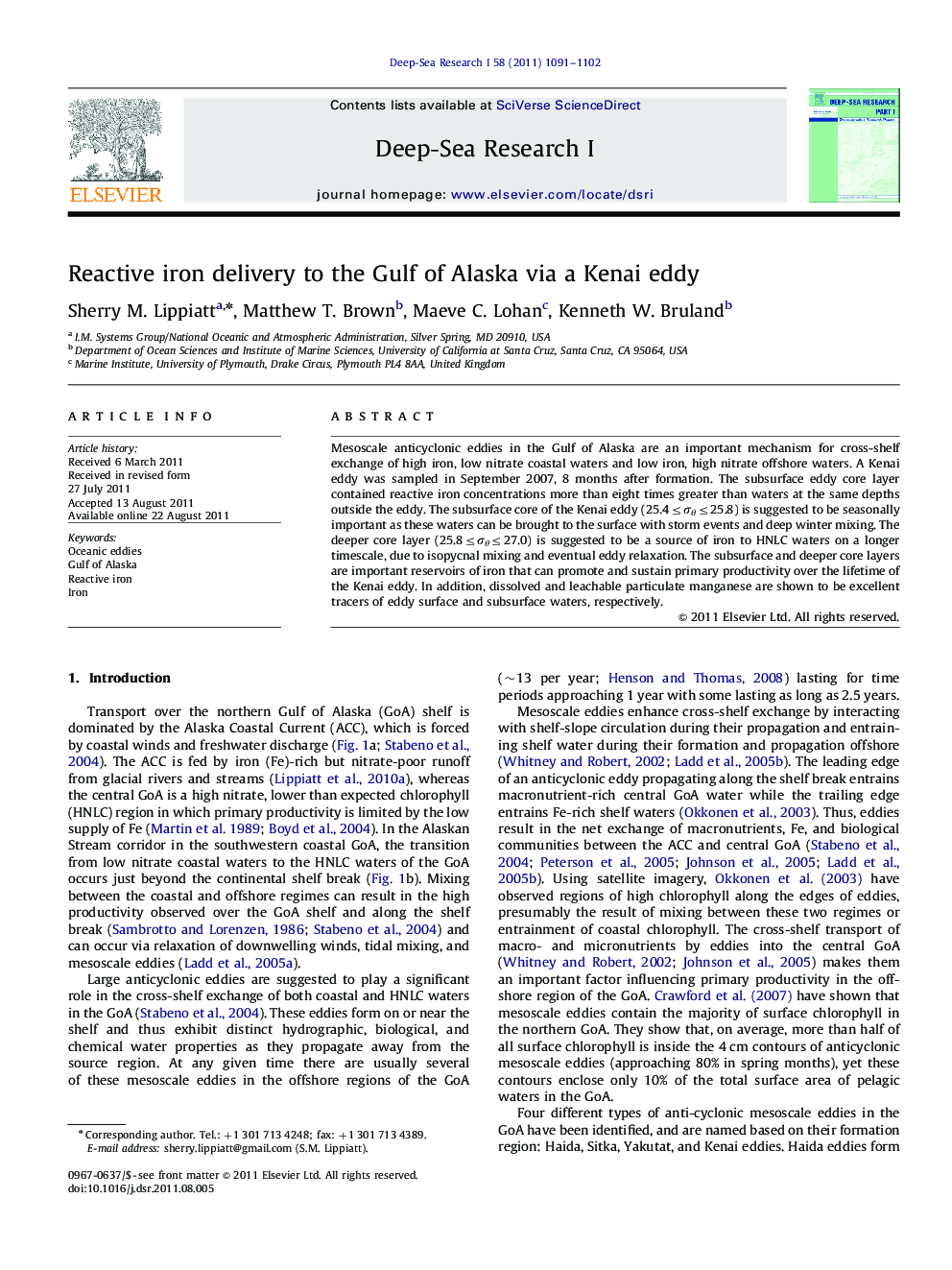| Article ID | Journal | Published Year | Pages | File Type |
|---|---|---|---|---|
| 4534829 | Deep Sea Research Part I: Oceanographic Research Papers | 2011 | 12 Pages |
Mesoscale anticyclonic eddies in the Gulf of Alaska are an important mechanism for cross-shelf exchange of high iron, low nitrate coastal waters and low iron, high nitrate offshore waters. A Kenai eddy was sampled in September 2007, 8 months after formation. The subsurface eddy core layer contained reactive iron concentrations more than eight times greater than waters at the same depths outside the eddy. The subsurface core of the Kenai eddy (25.4≤σθ≤25.8) is suggested to be seasonally important as these waters can be brought to the surface with storm events and deep winter mixing. The deeper core layer (25.8≤σθ≤27.0) is suggested to be a source of iron to HNLC waters on a longer timescale, due to isopycnal mixing and eventual eddy relaxation. The subsurface and deeper core layers are important reservoirs of iron that can promote and sustain primary productivity over the lifetime of the Kenai eddy. In addition, dissolved and leachable particulate manganese are shown to be excellent tracers of eddy surface and subsurface waters, respectively.
► First study on iron content in a Kenai eddy. ► Subsurface core layer contained reactive iron concentrations more than eight times greater than waters outside the eddy. ► Mesoscale anticyclonic eddies contain a significant amount of reactive iron in their subsurface and deeper core layers.
